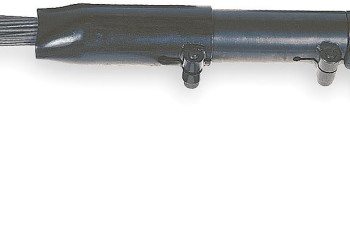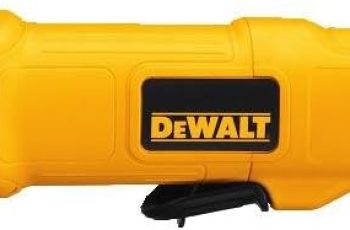Imagine transforming your woodworking projects with a tool that combines precision, versatility, and control. Integrating variable speed die grinders into your arsenal could be the game-changer you’ve been searching for. With adjustable RPM settings and a range of attachments, these grinders cater to intricate designs and professional finishes. But how do you harness their full potential and guarantee ideal results? There’s more to discover about maximizing their benefits.
Key Takeaways
- Variable speed die grinders allow for precise shaping and carving in woodworking projects with adjustable RPM settings.
- Ergonomic, lightweight designs of die grinders enhance control and reduce fatigue during extended woodworking sessions.
- Brushless motors provide smooth speed control, essential for detailed carving and finishing in woodworking.
- Versatile collet sizes enable quick bit changes, adapting to various woodworking tasks and tight spots.
- Proper speed settings prevent splintering, improve bit longevity, and ensure safe operation during woodworking projects.
Shaping and Carving With Precision
When it comes to shaping and carving with precision, variable speed die grinders are invaluable tools in woodworking. You can adjust the RPM from 10,000 to 35,000, tailoring the speed to the wood type and bit size for precision shaping. With brushless motors, these grinders offer smooth speed control, essential for intricate carving. The ergonomic, lightweight design provides steady hand control, even in prolonged use. Carbide burr bits are perfect for hardwoods, allowing you to create detailed engravings and patterns. The versatility of collet sizes lets you switch bits quickly, adapting to various tasks. Whether sculpting curves or contours, the multiple speed settings enable you to delicately manage depth and shape while maintaining the wood’s integrity and your project’s finesse. The versatile tool nature of die grinders makes them suitable for various tasks across different industries, enhancing their utility in a woodworking context.
Finishing Techniques for a Professional Look
After mastering shaping and carving with variable speed die grinders, achieving a professional finish is your next priority. Die grinders, designed for precision, excel in tasks requiring accuracy and control, making them ideal for detailed woodworking projects. Start by using low-grit abrasives to smooth rough edges. Progressively increase grit size for uniformity, and don’t forget to clean the surface to guarantee finish adhesion. For finish enhancement and surface protection, apply mineral oil or specialized wood finishes generously. Let them soak for deep penetration. Experiment with various finishes like oils, waxes, or varnishes depending on desired gloss and durability. Light sanding between coats keeps surfaces smooth and improves adherence for subsequent layers. Finally, use polishing bits on your die grinder to buff the finish to a professional sheen, ensuring no swirl marks remain, showcasing your woodworking expertise.
Speed Settings and Their Importance
Understanding the importance of speed settings on variable speed die grinders is essential for achieving ideal results in woodworking. Speed adjustment allows you to match the RPM to the material you’re working with, ensuring material compatibility. For softer woods, lower speeds prevent splintering and prolong bit life, while hardwoods may require higher speeds for efficient removal. However, be cautious to avoid overheating. Adapting speed to grain direction is vital, using slower settings for cross-grain cuts to minimize tear-out. High speeds (above 20,000 RPM) are suited for aggressive shaping, whereas slower speeds (around 10,000-15,000 RPM) are ideal for detailed carving. Proper speed use not only improves bit longevity but also enhances control and safety, reducing the risk of tool kickback and material damage. Air angle die grinders are essential tools for both professionals and DIY enthusiasts, enhancing efficiency and precision in various applications.
Exploring Motor Technology and Power Options
Having a firm grasp on speed settings sets the stage for appreciating the advancements in motor technology and power options available in variable speed die grinders. Embracing brushless motor technology, you’ll find enhanced motor efficiency, thanks to the elimination of wear-prone brushes. This leads to longer-lasting, quieter, and more powerful tools that are perfect for woodworking. Technology advancements have enabled compact designs without sacrificing power, making them ideal for tight spaces. The variable-speed dial on these grinders can reach up to 25,000 RPM, allowing you to tailor the tool’s performance to the specific requirements of your woodworking project. When considering power options, corded models deliver consistent, high power for heavy-duty tasks, while cordless variants offer portability and convenience. Cordless grinders, powered by advanced battery technologies, guarantee extended runtime and smart performance monitoring. Whether you need continuous power or mobility, there’s a die grinder tailored to your woodworking needs.
Versatility in Tool Attachments
A key feature of variable speed die grinders is their compatibility with a wide range of tool attachments, making them incredibly versatile for woodworking projects. Thanks to their attachment compatibility, these tools accept common collet sizes like 6mm and 6.35mm (1/4″), ensuring bit interchangeability for diverse tasks. You can switch between grinding bits, sanding discs, cutting wheels, and wire brushes effortlessly, adapting to various materials such as wood, metal, stone, and plastic. Specialized attachments, like collet extensions, help you reach intricate areas. With aggressive thread-on bits and rubber coatings enhancing grip, you’ll find handling easier for specific woodworking applications. The versatility extends to mobility too, particularly when using cordless models that enhance your workshop or outdoor project experiences.
Ergonomic Features for User Comfort
When you’re working with variable speed die grinders, ergonomic features can make a huge difference in comfort and efficiency. An ergonomic design with a slim, contoured grip helps reduce fatigue, especially during long sessions. Soft-touch or rubberized materials increase user comfort by minimizing slippage, while balanced weight distribution prevents wrist and forearm strain. Compact size and light weight enhance precision and control in your woodworking tasks.
Variable speed control allows you to tailor settings to different wood types, reducing hand strain and ensuring consistent tool performance. Features like brushless motors and anti-vibration coatings further enhance comfort by minimizing vibration and heat. With these ergonomic considerations, you’ll find your woodworking projects more enjoyable and less physically demanding, maintaining comfort throughout your work.
Enhancing Safety in Woodworking Tasks
While woodworking with variable speed die grinders, safety should be your top priority. Adhering to safety protocols is vital in accident prevention. Start by using grinders with built-in safety mechanisms, like paddle switches that stop the tool when released and electronic shutdowns that activate if the tool jams. Always inspect protective guards to confirm they’re in top condition, as they contain debris if a disc breaks.
Wearing the right personal protective equipment (PPE) is non-negotiable—safety glasses, hearing protection, and respiratory masks are essential. Operational safety practices include matching RPM to the material to reduce kickbacks, and using braking technology for rapid stops. Finally, keep your workspace well-lit and free of clutter to maintain control and situational awareness.
Maintenance Tips for Longevity
To keep your variable speed die grinder running smoothly, make regular cleaning a priority by removing dust and debris after each use. Proper lubrication is essential, so apply the right lubricants to moving parts without overdoing it to avoid attracting more dust. Don’t forget to check and maintain bits and collets to guarantee a secure fit and peak performance.
Regular Cleaning Practices
Proper maintenance is the key to extending the life of your variable speed die grinder. Establish a cleaning schedule to incorporate effective cleaning techniques after each use. Begin by removing dust from the tool body with a soft brush or compressed air, making sure ventilation slots remain clear for maximum airflow and cooling. Wipe the exterior with a damp cloth, keeping moisture away from the motor. Detach and clean collets, nuts, and grinding bits to prevent residue from affecting performance. Regularly use compressed air to clean internal areas, especially for pneumatic models. Properly inspect all parts, including collets and grinding wheels, and replace worn components promptly. Keeping a maintenance record helps identify recurring issues early and maintains consistent tool performance.
Proper Lubrication Techniques
Keeping your variable speed die grinder well-lubricated is vital for its longevity and performance. Opt for specialized lubricant types like air tool oil for pneumatic grinders or high-speed greases for electric models. Avoid heavy motor oils; they can gum up internal components. For effective application methods, add two to three drops of oil into the air inlet before each use, or grease electric grinder bearings after several hours of operation. Use an oil can or grease gun with a fine nozzle for precision. Don’t overdo it; too much lubricant can attract debris. Rotate the tool briefly after lubrication to guarantee even distribution. Regular maintenance and proper lubrication techniques not only enhance performance but also prevent early tool failure.
Bit and Collet Maintenance
Maintaining your die grinder’s bits and collets is essential for guaranteeing its peak performance and longevity. Start with regular bit cleaning; after each use, remove dust and debris using compressed air or a soft brush. This prevents buildup that affects performance. Avoid solvents that might harm collet materials. For collet inspection, check for wear or corrosion on collet jaws and collet nut threads to guarantee a secure grip. Inspect bits for wear signs like rounded edges or cracks, which can cause vibration. Always verify bits fit well and are suitable for your grinder’s speed rating. Store bits and collets in dry, organized cases to avoid damage. Handling them carefully prevents fractures, guaranteeing your tools remain in top condition.
Expanding Woodworking Capabilities
When it comes to expanding your woodworking capabilities, variable speed die grinders can be a game changer. Their creative design and seamless tool integration allow you to tackle intricate projects with precision. By offering RPM control up to 35,000, these grinders enable detailed carving and shaping in tight spots using smaller collet sizes. The ergonomic, lightweight design guarantees extended use without fatigue, while LED lighting improves visibility in dim areas.
Versatility shines as these tools pair with carving bits for sculpting various wood types, perfect for creating ornamental details or precise joinery cleanup. With variable speed settings, you can manage wood removal rates to prevent chip-out or burns, making them ideal for both aggressive shaping and gentle finishing tasks, therefore truly expanding your woodworking potential.
Conclusion
Incorporating variable speed die grinders into your woodworking projects can greatly elevate your craftsmanship. With their precision shaping, professional finishing techniques, and versatile attachments, you’ll find these tools indispensable. Adjusting speed settings to suit your materials guarantees ideal results, while ergonomic designs and advanced motor technology enhance comfort and efficiency. By following maintenance tips, you’ll keep your grinder in top condition, expanding your woodworking capabilities and achieving intricate designs with ease. Embrace the potential of die grinders in your workshop!

